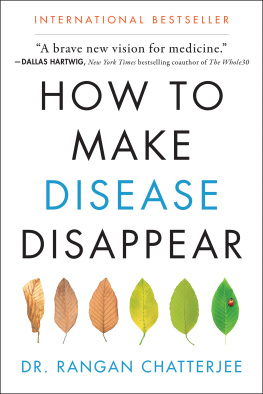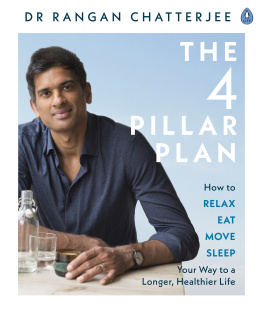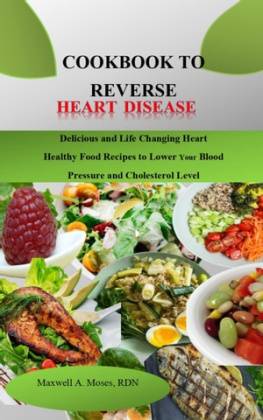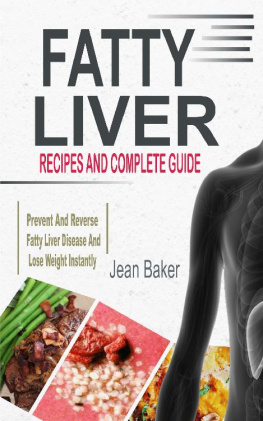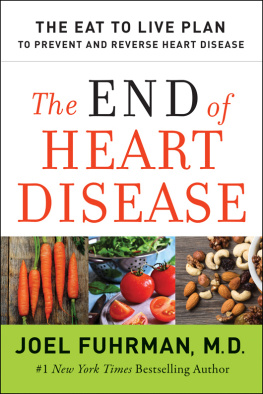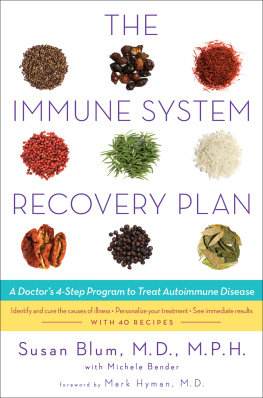Bell Susan - How to Make Disease Disappear
Here you can read online Bell Susan - How to Make Disease Disappear full text of the book (entire story) in english for free. Download pdf and epub, get meaning, cover and reviews about this ebook. City: New York;NY, year: 2018, publisher: HarperCollins;HarperOne, genre: Religion. Description of the work, (preface) as well as reviews are available. Best literature library LitArk.com created for fans of good reading and offers a wide selection of genres:
Romance novel
Science fiction
Adventure
Detective
Science
History
Home and family
Prose
Art
Politics
Computer
Non-fiction
Religion
Business
Children
Humor
Choose a favorite category and find really read worthwhile books. Enjoy immersion in the world of imagination, feel the emotions of the characters or learn something new for yourself, make an fascinating discovery.
- Book:How to Make Disease Disappear
- Author:
- Publisher:HarperCollins;HarperOne
- Genre:
- Year:2018
- City:New York;NY
- Rating:5 / 5
- Favourites:Add to favourites
- Your mark:
- 100
- 1
- 2
- 3
- 4
- 5
How to Make Disease Disappear: summary, description and annotation
We offer to read an annotation, description, summary or preface (depends on what the author of the book "How to Make Disease Disappear" wrote himself). If you haven't found the necessary information about the book — write in the comments, we will try to find it.
Bell Susan: author's other books
Who wrote How to Make Disease Disappear? Find out the surname, the name of the author of the book and a list of all author's works by series.
How to Make Disease Disappear — read online for free the complete book (whole text) full work
Below is the text of the book, divided by pages. System saving the place of the last page read, allows you to conveniently read the book "How to Make Disease Disappear" online for free, without having to search again every time where you left off. Put a bookmark, and you can go to the page where you finished reading at any time.
Font size:
Interval:
Bookmark:
Contents
Contents
For my dad, you have influenced me
in more ways than you ever knew.
I wish you were still here.
We are sick and getting sicker. In the United States today, a new generation of children has been born that has a lower life expectancy than the generation before it. This is shocking and extraordinary. To understand why its happening, we first have to grasp the terrible epidemic of chronic disease thats currently laying waste to millions.
Chronic diseases such as type 2 diabetes, high blood pressure, depression and dementia are today the nations leading causes of death and disability. Half of all American adults currently suffer from a chronic disease, with one in four people suffering from two or more. Chronic disease is, by a wide margin, now the deadliest problem facing America. Despite the statistics and the suffering, so much confusion exists about what we can do in our own lives to protect ourselves and live long, healthy lives. I have seen this firsthand as I have lived and worked with many families.
The good news is that I can make these diseases disappear. Thats right. This probably sounds like an extraordinary claim, but the reason I can make them disappear is that theyre an illusion. These diseases are not the inevitable result of aging. They are not simply our genetic fate or our destiny. We do not have to suffer needlessly. The truth is these diseases dont really exist, at least not in the way we think they do.
To come to this conclusion, I first had to travel down a long, hard road. Seventeen years ago, I graduated from medical school full of enthusiasm and passion, ready to go out and help people. But I always felt there was something missing. I started off as a specialist and then became a generalist, as an MD, but I always had this nagging sense that I was just managing disease or simply suppressing peoples symptoms. And then on December 28, 2010, a turning point came. That was the day my son nearly died.

Photography copyright 2018 by Susan Bell
I was on a skiing vacation with my family in the stunning snowy landscape of Chamonix, France. My son had been a little phlegmy and quiet all day, but I wasnt too worried. It was just a cold and I felt sure it would pass without issue. That evening my wife, Vidh, sat on the sofa watching TV while I was in the kitchen. I was watching the kettle, waiting for the water to boil, when I heard her shout: Rangan! Hes not moving! I rushed in. He must be choking! I said. Its the phlegm. I lifted him out of Vidhs arms, turned him over and slapped him over the back in an attempt to clear his airway. But nothing happened. Rangan, hes not choking, said Vidh. We need to go to the hospital. My sons arms were stretched out, his body was rigid, his eyes stared vacantly.
After a panicked rush down a snowy road that almost ended in my turning the car over, we found ourselves standing in the resuscitation room of the emergency room of the tiny Les Hpitaux du Pays du Mont-Blanc. As I watched the doctors take his temperature and try to get an intravenous line into his neck, I ran through the possibilities of what might be wrong with him. Was it epilepsy? Was it something more serious? I couldnt think. I felt numb. The truth was, I didnt have a clue. In that moment, I was no longer the doctor with nearly ten years experience whod graduated from the prestigious University of Edinburghs medical school. I was a terrified dad.
Five long, agonizing hours later, the doctor came in to see us, waiting by our sons bed. Dr. Chatterjee, we have an update, he said.
What is it? I asked.
Dr. Chatterjee, your sons calcium levels are very low. In fact, he has almost no calcium in his body at all. He experienced a hypocalcemic convulsion. Were going to give him some intravenous calcium.
My reaction was utter confusion. How had this happened? What did it mean? But my confusion in that moment was nothing compared with the shock I felt when I did finally discover the root cause of what happened. It was an entirely preventable vitamin D deficiency. This was as unbelievable as it was serious. Untreatedespecially in childrenvitamin D deficiency can lead to painful and permanent damage including deformities to the bones, a condition known as rickets. I was devastated. And I swore that I would never allow anything like it to happen again.
The crisis of my sons illness forced me to ask some honest and uncomfortable questions. Why had I not been made sufficiently aware of vitamin and other nutritional deficiencies during my supposedly top-of-the-line medical training? And why wasnt that training proving more effective in my practice? As an MD, my days were filled with seeing patients with chronic conditions such as joint pain, headaches, type 2 diabetes, insomnia, depression, weight gain and fatigue. I hated to admit it, but the fact was, I reckoned I was helping maybe 20 percent of these people. The approach to consultations Id been taught in medical school simply wasnt working. And if my medical training was failing me so badly for so many of my patients, what else could I do but embark on my own course of re-education?
And so began an incredible journey through many new worlds of knowledge that, Im sad to say, the majority of doctors still have relatively little idea about. I immersed myself in research, especially around nutrition, movement science, stress reduction, ancestral health and functional medicine. I also came across research that allowed me to see afresh what Id learned while completing my BSc honors degree in immunology, gaining valuable insight into the rapidly developing field of gut health and the microbiome. I started applying the science, first with my family and then with my patients. Do you know what happened? People started getting betterreally better. Id finally learned to resolve the root cause of their problems, rather than simply suppressing their symptoms.
What Id learned, in a way that I hadnt fully grasped before, was that acute disease and chronic disease are entirely different things. Acute disease is something that, as doctors, were pretty good at. Its relatively simple. You have something like pneumonia, a severe lung infectionso in your lung you have the overgrowth of some bugs, typically a type of bacteria. We identify the bacteria and we give you a treatment, typically an antibiotic that kills it. The bacteria die and, hey presto, you no longer have your pneumonia. The problem is, we apply that same thinking to chronic disease, and it simply doesnt work.
Chronic disease doesnt just happen like this. Chronic disease has many different causes. You dont just wake up some day suffering from one; by the time we give you the diagnosis, things have already been going wrong for a long, long time.
Let me tell you about one patient I met whom I found to be struggling with an all-too-common chronic disease. Thirty-five-year-old Mary was struggling with weight problems, joint problems, sleep problems and fatigue. I did some blood tests and diagnosed her with type 2 diabetes. This is one of the most harmful chronic diseases the world is currently facing. One in ten Americans currently has type 2 diabetes, and one in four has its precursor, pre-diabetes. The vast majority of sufferers dont even know theyve got it. Between 1990 and 2013, rates of the disease shot up by an incredible 71 percent in the United Statesone of the most dramatic increases of any nation. It currently costs the US alone more than $245 billion a year. Within thirty days of treating Mary, Id made her diabetes disappear. Two years on, her disease is nowhere to be seen!
Most cases of type 2 diabetes are caused by something called insulin resistance. Insulin is a very important hormone, and one of its key functions is to keep your blood sugar tightly controlled in your body. Say you have a sugary bowl of cereal for breakfast. What happens is your blood sugar goes up, but your body releases a little bit of insulin and that helps it come back down to normal. The problem is, after years of dietary abuse with sugary foods, the insulin begins to lose its power. As you become more insulin resistant, you need more and more insulin to do the same job. You can think of it as a little like alcohol. The very first time you have a drink, what happens? Lets say some wineone or two sips, or maybe half a glassyou feel tipsy, you feel a bit drunk. As you become a more seasoned and accustomed drinker, you need more and more alcohol to have the same effect, and thats whats going on with insulin. You need more and more insulin to have the same effect. When the insulin can no longer keep your sugar under control, despite its best efforts, we say youve got a disease, type 2 diabetes. However, things will have been going wrong in your body for many years before that.
Font size:
Interval:
Bookmark:
Similar books «How to Make Disease Disappear»
Look at similar books to How to Make Disease Disappear. We have selected literature similar in name and meaning in the hope of providing readers with more options to find new, interesting, not yet read works.
Discussion, reviews of the book How to Make Disease Disappear and just readers' own opinions. Leave your comments, write what you think about the work, its meaning or the main characters. Specify what exactly you liked and what you didn't like, and why you think so.

